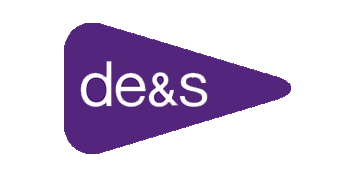UK Defence Equipment & Support makes confident decisions with simulation

- Industry
- Defense
- Location
- United Kingdom
- Goals
- Assess the objective analysis of procurement options and to model future demand for instructors and student output.
Achievements with Simul8
-
-
Merlin IPT was able to confidently make savings based on objective data
-
-
Instead of relying on utilization data gathered from static analysis, the dynamic model provided flow data
-
-
Ensuried best value for money for UK armed forces
About the project
UK Defence Equipment & Support (DE&S) equips and supports the UK's armed forces for current and future operations.
It acquires and supports through-life, including disposal, equipment and services ranging from ships, aircraft, vehicles and weapons, to electronic systems and information systems. DE&S employs approximately 29,000 staff at bases across the UK.
The Merlin Integrated Project Team procures and supports the Royal Navy's Merlin Mk1 helicopter, including the Training System. The Merlin Training System, which delivers trained aircrew and maintainers, was modeled using Simul8 to support a procurement options analysis as part of Merlin Capability Sustainment Programme (MCSP). MCSP aims to update the Merlin Mk1 with planned delivery in 2013.
Simul8 was used by DE&S to assess the objective analysis of procurement options and to model future demand for instructors and student output.
How was simulation used by DE&S?
DE&S followed a thorough design process; from operational analysis and activity cycle diagram, to simulation development, verification and validation. Using Simul8, they considered options for the number and type of simulators, part task trainers and classrooms.
The delivery of trained students was the primary objective and this became the procurement metric. The flow of students to the front line had to be optimized so a dynamic simulation model was required. The ability to model individual students and instructors in a clear visualization of the training system was a definite advantage.
The training paths for the many students were held in spreadsheets and these were easily imported into the Simul8 'information stores'. This data was then checked and validated by each student in the model to ensure they followed the correct flow through the training system.
The various simulators, part task trainers and classrooms quickly translated to Simul8 'work centers' and the 'instructors' became Simul8 'resources'. The model was confirmed through validation with live training data.


"The ability to model individual students and instructors in a clear visualization of the training system was a definite advantage."
Procurement Officer, UK Defence Equipment & Support

The Results
The procurement assessment project looked at five main options. By running the model over a period of 25 years the queues for simulators, demand for instructors and student output rate could be identified. Using Simul8 as a visualization tool allowed queues to be easily identified and investigated as they built up.
The resultant data was exported from Simul8 for graphing and statistical analysis which gave confidence in the results. Simul8 also provided work centre graphing for a quick analysis of training system simulator activity.
The DE&S concluded that if they were to hire 1 more instructor member of staff that the bottleneck in the training process could be eradicated.
The Benefits
In principle the key benefit was the objective analysis of procurement options. Where in the past a subjective assessment would have been made, using Simul8 meant that the Merlin IPT was able to confidently make savings based on objective data. Instead of relying on utilization data gathered from static analysis, the dynamic model provided flow data.
The real saving has been in ensuring best value for money for UK armed forces although the optimized output of trained personnel to the front-line units can prove difficult to quantify in revenue terms.
In terms of future projects, the simulation model was later used to help optimize course size, instructor manning and scheduling/prioritization strategies.
Learn more about Simul8 for process improvement
Find out more about how simulation is used by organizations, read more case studies and access a range of learning resources.
Learn more